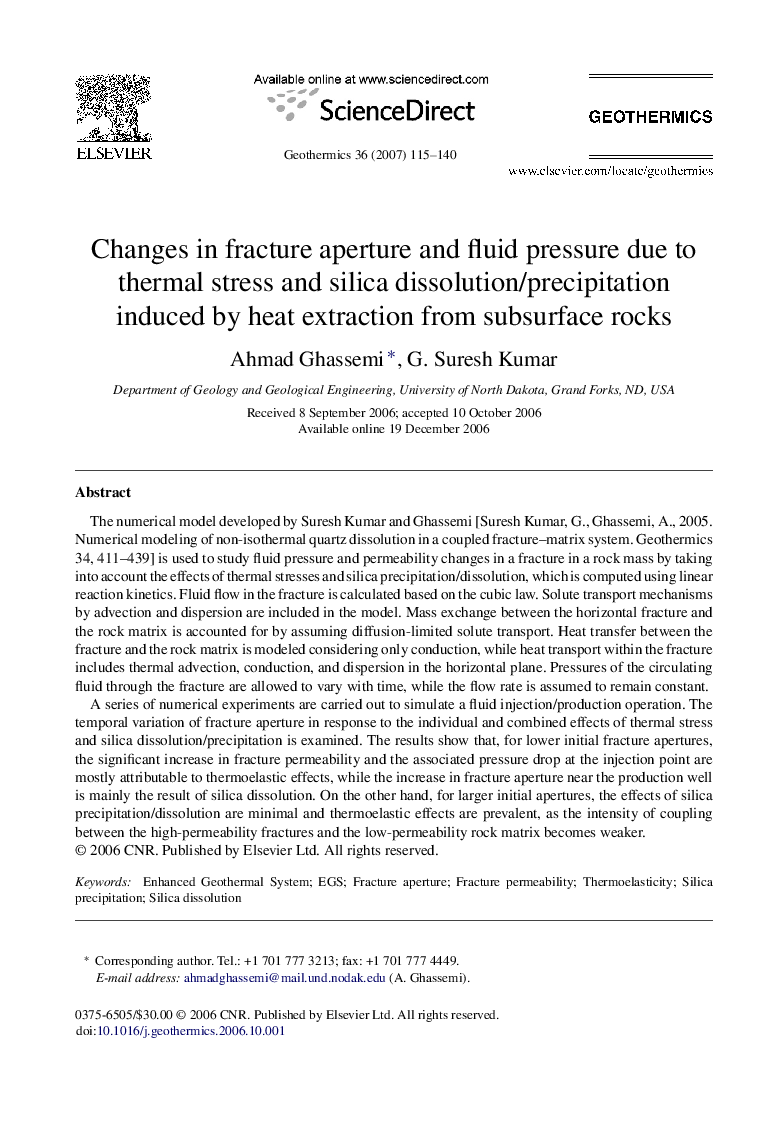| کد مقاله | کد نشریه | سال انتشار | مقاله انگلیسی | نسخه تمام متن |
|---|---|---|---|---|
| 1742776 | 1017725 | 2007 | 26 صفحه PDF | دانلود رایگان |

The numerical model developed by Suresh Kumar and Ghassemi [Suresh Kumar, G., Ghassemi, A., 2005. Numerical modeling of non-isothermal quartz dissolution in a coupled fracture–matrix system. Geothermics 34, 411–439] is used to study fluid pressure and permeability changes in a fracture in a rock mass by taking into account the effects of thermal stresses and silica precipitation/dissolution, which is computed using linear reaction kinetics. Fluid flow in the fracture is calculated based on the cubic law. Solute transport mechanisms by advection and dispersion are included in the model. Mass exchange between the horizontal fracture and the rock matrix is accounted for by assuming diffusion-limited solute transport. Heat transfer between the fracture and the rock matrix is modeled considering only conduction, while heat transport within the fracture includes thermal advection, conduction, and dispersion in the horizontal plane. Pressures of the circulating fluid through the fracture are allowed to vary with time, while the flow rate is assumed to remain constant.A series of numerical experiments are carried out to simulate a fluid injection/production operation. The temporal variation of fracture aperture in response to the individual and combined effects of thermal stress and silica dissolution/precipitation is examined. The results show that, for lower initial fracture apertures, the significant increase in fracture permeability and the associated pressure drop at the injection point are mostly attributable to thermoelastic effects, while the increase in fracture aperture near the production well is mainly the result of silica dissolution. On the other hand, for larger initial apertures, the effects of silica precipitation/dissolution are minimal and thermoelastic effects are prevalent, as the intensity of coupling between the high-permeability fractures and the low-permeability rock matrix becomes weaker.
Journal: Geothermics - Volume 36, Issue 2, April 2007, Pages 115–140